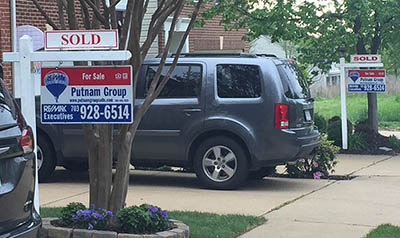
March Existing Home Sales Down 2.4%

Existing home sales edged lower in March, marking a muted start to the spring housing market, the National Association of Realtors reported Thursday.
NAR reported March existing home sales (https://www.nar.realtor/existing-home-sales) fell by 2.4% from February to a seasonally adjusted annual rate of 4.44. Year-over-year, sales fell by 22.0% (5.69 million).
Single-family home sales fell too a seasonally adjusted annual rate of 3.99 million in March, down 2.7% from 4.10 million in February and 21.1% from one year ago. The median existing single-family home price fell to $380,000 in March, down 1.4% from a year ago. Existing condominium and co-op sales were unchanged at a seasonally adjusted annual rate of 450,000 units in March, but fell by 28.6% from the previous year. The median existing condo price rose to $337,300 in March, an annual increase of 2.1%.
Regionally, sales were underwhelming. Sales in the South fell by 1.0% in March from February to an annual rate of 2.07 million and fell by 20.4% decrease from the prior year. The median price in the South rose $347,600, an increase of 0.3% from one year ago. In the West, existing-home sales declined by 3.5% from February to an annual rate of 820,000 and fell by 30.5% from a year ago. The median price in the West fell to $565,400, down 7.5% from March 2022.
Sales in the Northeast were unchanged from February at an annual rate of 520,000, but down 21.2% from a year ago. The median price in the Northeast rose to $395,400, up 1.0% from one year ago. In the Midwest, sales fell by 5.5% from February to an annual rate of 1.03 million and fell by 17.6% from the previous year. The median price in the Midwest rose to $273,400, up 1.7% from March 2022.
“Home buying activity took a step back in March,” said Charlie Dougherty, Economist with Wells Fargo Economics, Charlotte, N.C. “The main culprit behind March’s drop in sales appears owed to higher mortgage rates. Financing costs for homebuyers generally declined towards the end of 2022 and at the start of 2023, but began to trend higher in February and March. As we have noted recently, home buyers appear to be growing more accustomed to a higher rate environment. The sharp move up in rates, however, likely restrained sales, especially for first-time buyers who are a bit more sensitive to interest rates and who account for a growing share of the market.”
“Home sales are trying to recover and are highly sensitive to changes in mortgage rates,” said NAR Chief Economist Lawrence Yun. “Yet, at the same time, multiple offers on starter homes are quite common, implying more supply is needed to fully satisfy demand. It’s a unique housing market.”
Total housing inventory rose slightly at the end of March to 980,000 units, up 1.0% from February and 5.4% from one year ago (930,000). Unsold inventory sits at a 2.6-month supply at the current sales pace, unchanged from February but up from 2.0 months in March 2022.
“So far, the supply picture has improved only marginally as the spring selling season has gotten underway,” Dougherty said. “Even if buyers are able to digest higher financing costs, finding a home to purchase remains a major constraint. The vast majority of homeowners with a mortgage are holding on to rates well below those which prevail currently. Scarce inventory only compounds the problem, as many sellers also tend to be buyers. All told, existing home sales appear to have steadied following last year’s steep drop-off. However, elevated mortgage rates, low supply and a looming recession are factors that are likely to prevent a robust recovery in the near-term.”
The median existing-home price for all housing types in March fell to $375,700, a decline of 0.9% from a year ago ($379,300).
The report said properties typically remained on the market for 29 days in March, down from 34 days in February but up from 17 days a year ago. Sixty-five percent of homes sold in March were on the market for less than a month.
First-time buyers were responsible for 28% of sales in March, up from 27% in February but down from 30% a year ago. All-cash sales accounted for 27% of transactions in March, down from 28% in February and one year ago. Individual investors or second-home buyers purchased 17% of homes in March, down from 18% in February and the previous year.
Distressed sales represented 1% of sales in March, unchanged from February and one year ago.
